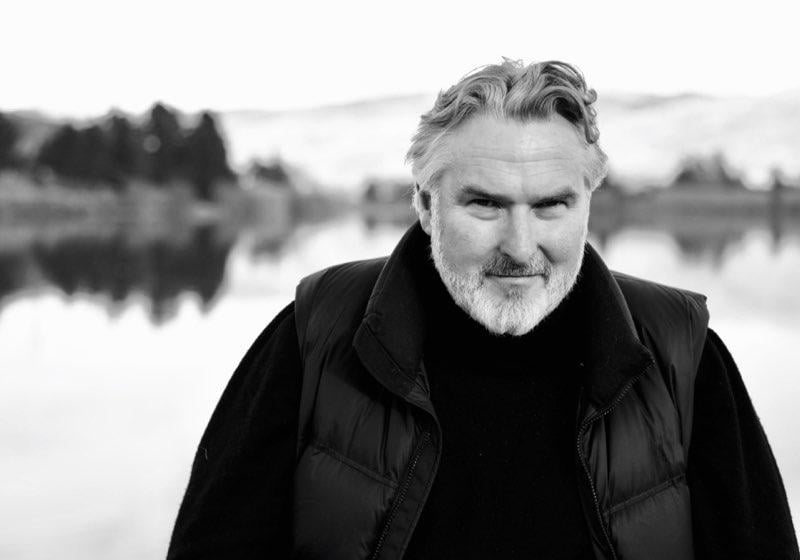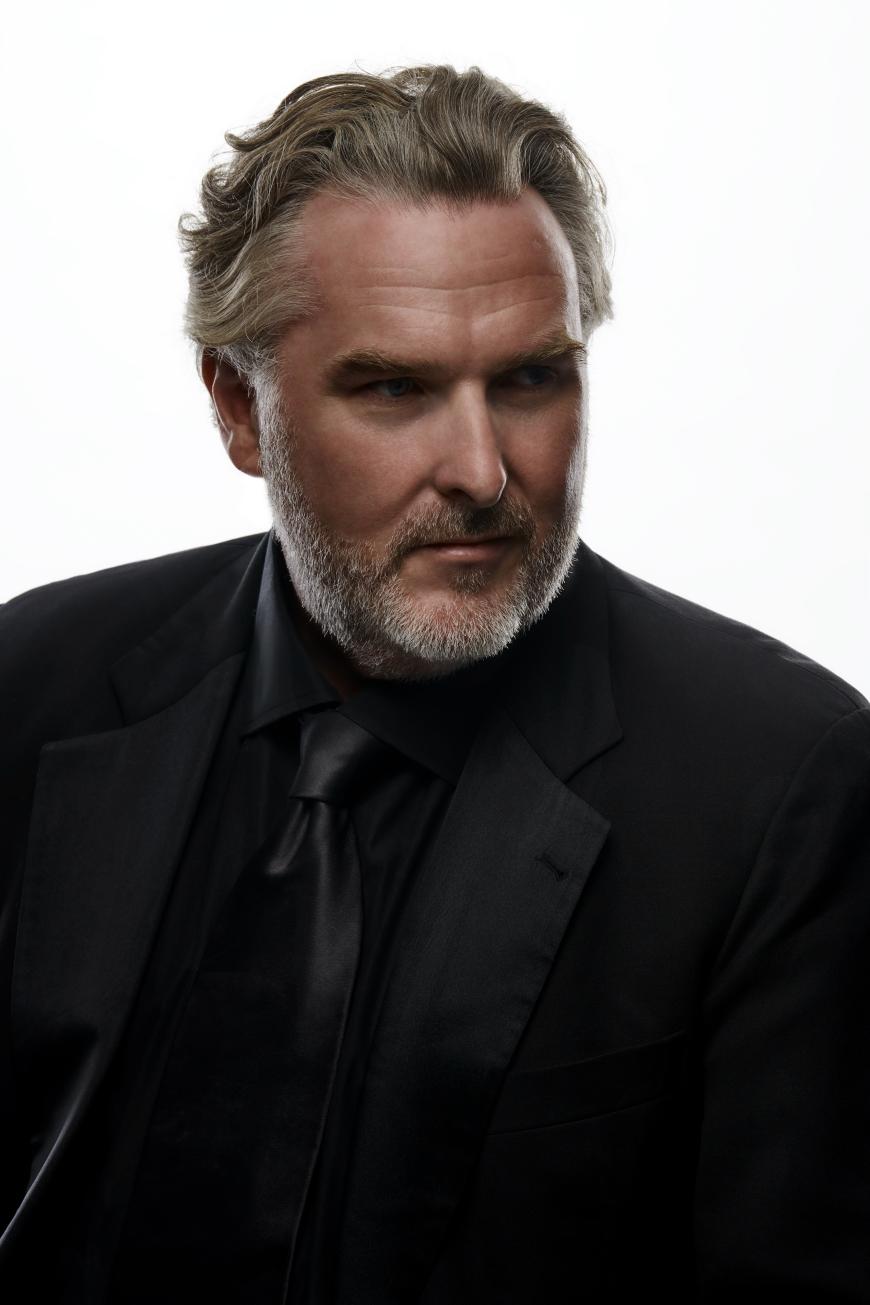
Simon O’Neill, a heldentenor who will play the title role in Richard Wagner’s Lohengrin at San Francisco Opera Oct. 15 – Nov. 1, was born and grew up on New Zealand’s South Island. The son of a teacher and a farmer, O’Neill loved music (as well as sports), and he played piano, organ, and brass instruments. He joined the choir in high school, partly because most of the members were girls. He toured around the world singing, which he loved.
At the University of Otago, O’Neill was a baritone, but his voice developed into a heldentenor. In his mid-20, he was awarded a Fulbright scholarship to study at Manhattan School of Music and then Juilliard, where he met some lifelong friends.
If you’re a heldentenor with a good voice, you’ll never be without work. Since debuting at London’s Royal Opera in 2005 and New York’s Metropolitan Opera in 2006, O’Neill, an alumnus of San Francisco’s Merola Opera Program, has received plum assignments every season. Just his notable performances of Wagner’s Ring of the Nibelung cycle would be too long to list, not to mention his recordings, which include a 2022 Grammy-winning performance of Gustav Mahler’s Eighth Symphony with the Los Angeles Philharmonic.
O’Neill talked with SF Classical Voice about how singing Mozart prepares you to sing Wagner, his love of choirs, and his favorite modern opera.

You have been in San Francisco before, to play Mao Tse-tung in John Adams’s Nixon in China and also as part of the Merola Opera Program. When did you first come to San Francisco? What do you like about it?
I came here first for the Western Opera Theater, which used to tour the country. It was a great little satellite company of San Francisco Opera that used to tour a lot of the West Coast and the middle of the United States and down the East Coast. I was fortunate enough to do it twice — in 2000 with Die Fledermaus and then in 2002 with La bohème. So, I was here with the Western Opera Theatre but also in the Merola program in 2002 in the production of La bohème. Then I came back in 2012 for Nixon in China, a John Adams work which I adored.
You know, I love coming to San Francisco because it’s sort of relatively close to where I’m from. It’s 13 hours on a plane away, but you know, it is the Pacific Ocean, right? It’s just lovely. It’s a great city.
What did you like so much about Nixon in China?
I’ve done that role a few times. I think it’s an absolutely fantastic work. It’s my favorite post-1945 work. I love Nixon in China. I think it’s an absolute masterpiece. And the role of Mao Tse-tung is written for a voice like mine, and I adore the role. I did a lot of study on Mao Tse-tung and the way he was when Nixon visited him in 1972. When that happened, I wasn’t even 3–4 months old. It happened in February ’72, and I was born in late December ’71, so I was alive when this thing happened in real life.
It’s phenomenal to play the role. I mean, I’ve played Mao Tse-tung in normal makeup, I’ve played Mao Tse-tung with full prosthetics, and I’ve also played him just with my normal Simon O’Neill New Zealand-Irish face. And I sing it exactly the same way.
I feel it’s suited to a voice like mine that sings Lohengrin and Siegfried and these higher heldentenor roles. I think it’s suited to a voice with real metal in the sound. That’s just my personal opinion. My voice does have a sort of metal center to it, and it suits that role of Mao Tse-tung. It’s actually very difficult to sing. There are some very, very difficult vocal passages.
Nothing in comparison to Madame Mao. The Madame Mao scene at the end of Act 2 is one of the great moments of opera, I think. It’s fantastic. And my friend Brian Mulligan, who is in Lohengrin with me, he was Nixon in that. And Brian and I were at Juilliard together. So, it’s lovely to be here in San Francisco, with friends I’ve known for 20–25 years.

What do you need to be able to sing those roles?
I specialize in the Romantic German roles. That’s essentially my career. Did I think I was going to be doing that 21 years ago when I was here at Merola? No, I dreamed of Rodolfo in La bohème. I dreamed of singing all the big Italian roles, which I adore, and I do sing Mozart roles and Puccini roles, but my career has taken a route where I specialize more in the German Romantic repertoire of Beethoven’s Fidelio and then Wagner. I’ve sung pretty much all [of Wagner’s] major operas, with one more to tick off, which I will do next year.
Then into the 20th century, when you get into [Arnold] Schoenberg and Mahler. I sing a lot of that. The last time I was here in San Francisco, I was singing Mahler’s Das Lied von der Erde with Michael Tilson Thomas and the gorgeous Sasha Cooke.
What’s the Wagner role you’ll be doing next year?
I am doing Tannhäuser next year. Lohengrin and Tannhäuser were written in the same decade, in the 1840s. So, Lohengrin has similarities to Tannhäuser. There are some fantastic choral scenes, obviously. And the tenor role is written in a similar style. Lohengrin premiered in 1850, and by 1853, Wagner had modified his style into the Ring cycle.
But Tannhäuser, I think, is a very difficult role. It’s more challenging than Lohengrin, and it’s as challenging as Siegfried. I have to prepare that every day, and I’m here at the opera house right now, and I have my Tannhäuser score here with me, along with Das Rheingold. I’m doing my first Loge [in that latter opera] in the new year with Gustavo Dudamel in Los Angeles. It’s so exciting. And there are so many of my friends in that cast that I’ve sung with for the last 20 years, like Morris Robinson and others. Barry Banks, who is here [at SF Opera] as well, singing in Omar, he is going to be in [the LA Phil’s Das Rheingold] as well.
That’s the thing with Wagner. It’s a little family, and when you have the absolute joy of singing this repertoire, I just catch up with my family again. I’m singing here with Kristinn Sigmundsson, who’s King Heinrich in Lohengrin, and Kristinn and I have sung so many times throughout the world. I love him. He’s a wonderful man and one of my great friends.
What do you particularly like about the role of Lohengrin?
Lohengrin is very beautiful to sing. I studied Tamino, I studied Tito, I studied Idomeneo. The Gran Sacerdote in Idomeneo was my debut at the Metropolitan Opera — all these Mozartian roles. To sing Lohengrin well, you must have a technical understanding and a discipline to sing Mozart well. It’s my personal view — some people might disagree with it. I’m saying all that study of roles like Tamino has set me up, I guess, to really enjoy singing Lohengrin.
With all these heldentenor roles, there are moments when Wagner demands the singer to really show great heroic timbre in the voice. Tamino has that to a degree, but Lohengrin takes it further. I try to show different colors with the role. I try to show a sweetness, a Tamino-type Italian sweetness and also a heroic German timbre as well.
You have an album, Father and Son. How did that come about?
EMI, one of the great labels, called me when I made my debut in Covent Garden and said, “We’d like to do an album with you, Simon.” That was a great, great honor. I thought to myself, “What am I going to do?” I could put together all my favorite arias and put out a debut disc like many of the tenors do, but I wanted to do something slightly different. So, I came up with the idea of fathers and sons. Lohengrin is the son of Parsifal, so I sing [selections from] Lohengrin and Parsifal. And then also, Siegfried is the son of Siegmund in the Ring cycle. And we put together this album, and it was really well received. I listen to it, not often, but the odd time I might listen to it, I’m very proud of it. I recorded that 12 or 13 years ago, and it really helped launch me onto the international stage, I guess. It’s an honor to have been under a big label. I was so proud of that.
How did you first get into opera?
Lohengrin comes into this. I’m a pianist. I’m a brass player. I started playing piano and brass at a young age, when I was 7–8 years old. I had a normal South Island upbringing in New Zealand, Irish Catholic, you know. I would go to church and was an altar boy. And I said to my mom, “I don’t want to be an altar boy anymore. I want to learn the pipe organ.” So, I got taught the organ. One of the first songs you need to learn on the organ, other than hymns, is “Here Comes the Bride,” which is Lohengrin.
And it helped me when I was studying later in New York City at Juilliard and Manhattan School of Music. I was singing in choirs in New York City and played the organ the odd time when the organist couldn’t be there.
I’m also a massive fan of jazz. I love Oscar Peterson on the piano. I grew up listening to Whitney Houston and Phil Collins and Billy Joel and all those things which I adore. If you look at my Spotify account or my phone, they’re full of all those great singers.
So, I was immersed in music. My family was not necessarily overly musical, but they gave me the opportunity of music.

When did you start singing opera?
Opera was very late. I mean, in high school, I would never sing. I was playing rugby. But then the music teacher, who was a great mentor to me, said to me, “Look, why don’t you join the choir? You’ve got a good voice.” And I looked at the choir, and there were about three dozen girls in the choir and, like, two boys, and I thought, “I might be able to get a prom date if I’m in the choir.”
So, I started singing really when I was 15 or 16, relatively late, but I was a good musician. I was able to sight-read very well. I immediately got thrust into the big choirs in New Zealand, the Secondary Students’ Choir and the New Zealand Youth Choir. Now, I’m proud to be a patron of these choirs as well.
When I hear the San Francisco Opera Chorus, I know those choruses, and I love this chorus. And I know what it’s like to be in a choir, and I so respect it, and I love the sound they make.
Then by the age of 19 or 20, I got the odd solo. I was a baritone at 18. I started studying at the university in New Zealand as a baritone, singing, you know, Figaro and all these arias. And then by 22–23, my voice developed, and it sort of had this more tenor quality to it. I won a Fulbright scholarship in my mid-20s, and I came to New York City, and I went to Manhattan School of Music and then Juilliard, and I felt like I was an American singer.




